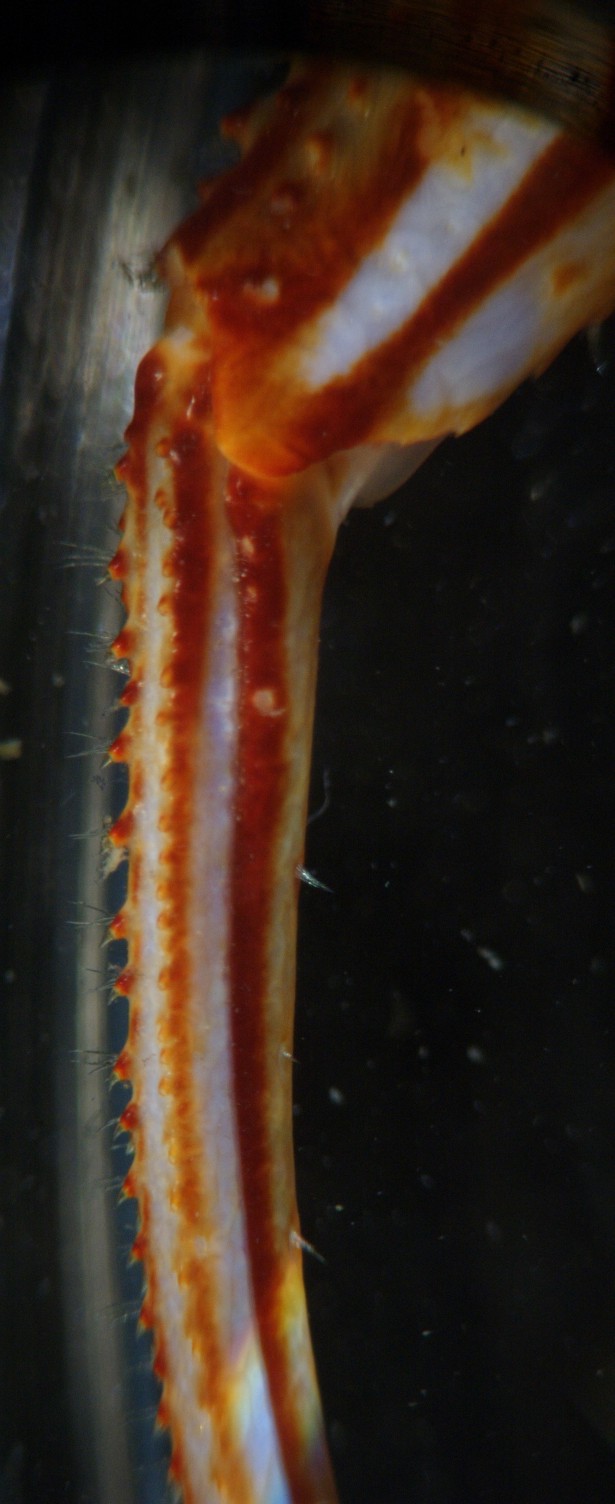Description: This hermit crab has a carapace which is smooth and only the shield is calcified (photo). The abdomen is asymmetrically coiled. The carpus of the right cheliped is longer than wide (photo)(photo). The cheliped is shorter than the walking legs (photo). The dactyls of legs 2 and 3 are longer than the merus, twisted in relation to the propodus, and have 2 reddish-brown stripes (photo). The upper margin of the dactyl is serrated and the lower margin has close-set corneous spines (photo). The merus of the walking legs is compressed laterally, with spines and toothed ridges. The carpus and propodus of the walking legs have serrated dorsal margins and small spines on the surface. The chelipeds are spiny dorsally and marginally (photo) but are nearly smooth ventrally (photo). The dorsal side of the left (smaller) cheliped is flat (photo). The eystalks are short and the eyes are large and black (photo). The legs and chelipeds have orange transverse bands. The ischium of the chelipeds has brown bands, the merus is pink, brown, and white with brown margins and teeth plus an orange distal band. The palm of the propodus is pale yellow. It has dark brown medial spines and red marginal spines. The finger of the propodus is white or gray-blue with a white tip and white teeth (photo). The walking legs have a yellow and white ischium, a merus with white, tan, orange, and mahogany with scattered brown spots; a yellow carpus with dark spines plus a mahogany stripe posteriorly and a white patch near the end, a propodus with white, yellow, orange, and brown and a mahogany stripe, and a dactyl which is white, orange, and violet-blue with dark spines and two narrow brownish-red stripes. The legs have a green or gold iridescent sheen to them. The eyestalks have a red band at the base and white and brown bands (photo). The antennal flagellum is pale yellow (photo). Carapace shield length to 19.6 mm and total carapace length up to 4.5 cm.
How to Distinguish from Similar Species: The large black eyes plus orange bands on the legs are distinctive. P. aleuticus and P. ochotensis have spines (or grains) on the ventral side of the chelipeds, plus P. ochotensis has greenish-yellow eyes. Most other hermit crabs do not have the twisted dactyls on legs 2 and 3.
Geographical Range: Northern Alaska to southern California
Depth Range: Intertidal to 146 m; usually subtidal
Habitat: Usually on sand, mud, shell, or gravel bottoms.
Biology/Natural
History:
This is
one of the largest and most common hermit crabs found in subtidal sandy
areas. As seen in many other crab species, males carry
females around
prior to the female molting so that they can mate. This species can
grow
large and often lives in moon snail shells,Euspira
lewisii. Small individuals may have shells
covered with hydroids
and have partly yellow eyes. It is often found among sea pens
(Ptilosarcus
gurneyi) in Puget Sound. Females may
carry up to three
broods of eggs per year.
| Return to: | |||
| Main Page | Alphabetic Index | Systematic Index | Glossary |
References:
Dichotomous Keys:Carlton, 2007
Coffin, 1952
Kozloff, 1987, 1996
General References:
Hart,
1982
Jensen,
1995
Lamb
and Hanby, 2005
Niesen,
1997
O'Clair
and O'Clair, 1998
Scientific Articles:
Web sites:
General Notes and Observations: Locations, abundances, unusual behaviors:
Another view of the animal, partly out of the
shell.
The carapace
shield is clearly visible. Notice also how the dactyl
of
the walking legs twists slightly in relation to the propodus.
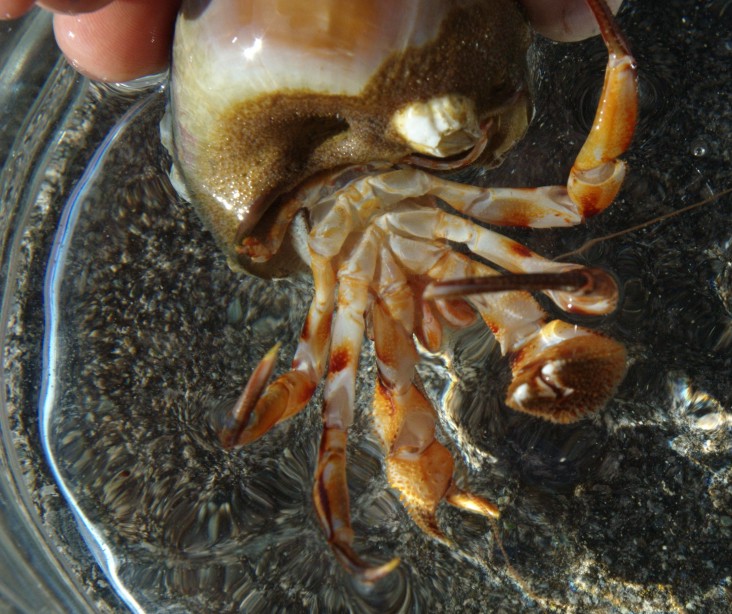
This view of the underside shows that few spines are
found on
those
surfaces. Note that the animal is in a moon
snail shell, which is the characteristic choice of this
species.
| Views of the right cheliped: | |
 |
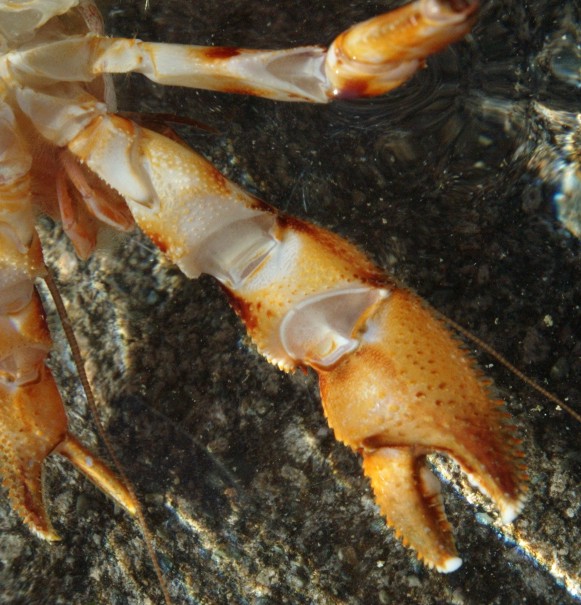 |
| Dorsal view of entire cheliped. Segments that can be seen (from base to tip): Merus, Carpus, Propodus, Dactyl | Ventral view of entire cheliped. Segments that can be seen (from base to tip): Basis, Ischium, Merus, Carpus, Propodus, Dactyl |
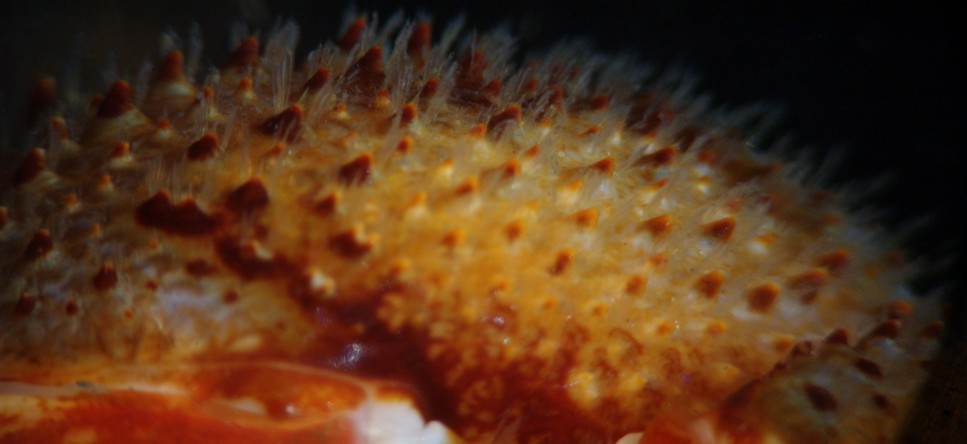 |
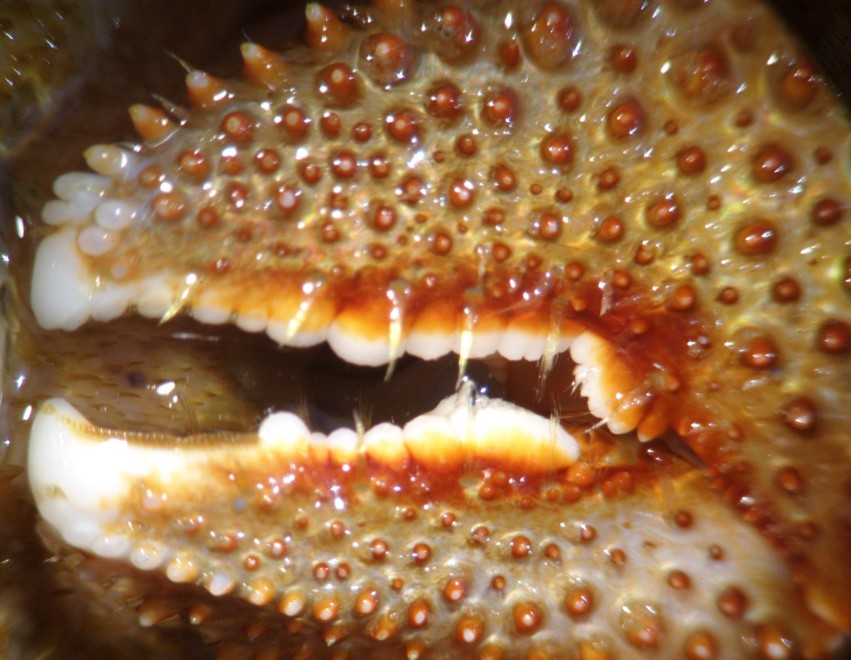 |
| A closeup of the spines on the dorsal side of the chela (propodus) | A closeup of the teeth on the right chela. Note the setae hanging down, which are probably sensory. |
| Views of the left cheliped: | |
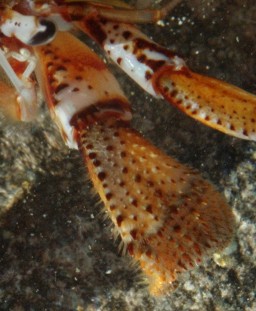 |
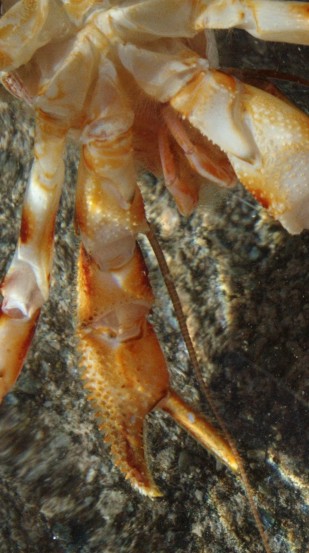 |
| Dorsal view of entire cheliped. Segments that can be seen (from base to tip): Merus, Carpus, Propodus | Ventral view of entire cheliped. Segments that can be seen (from base to tip): Basis, Ischium, Merus, Carpus, Propodus, Dactyl |
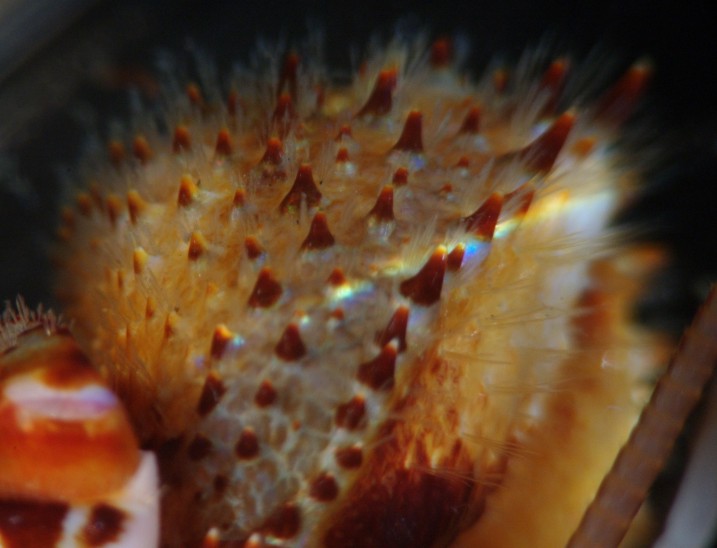 |
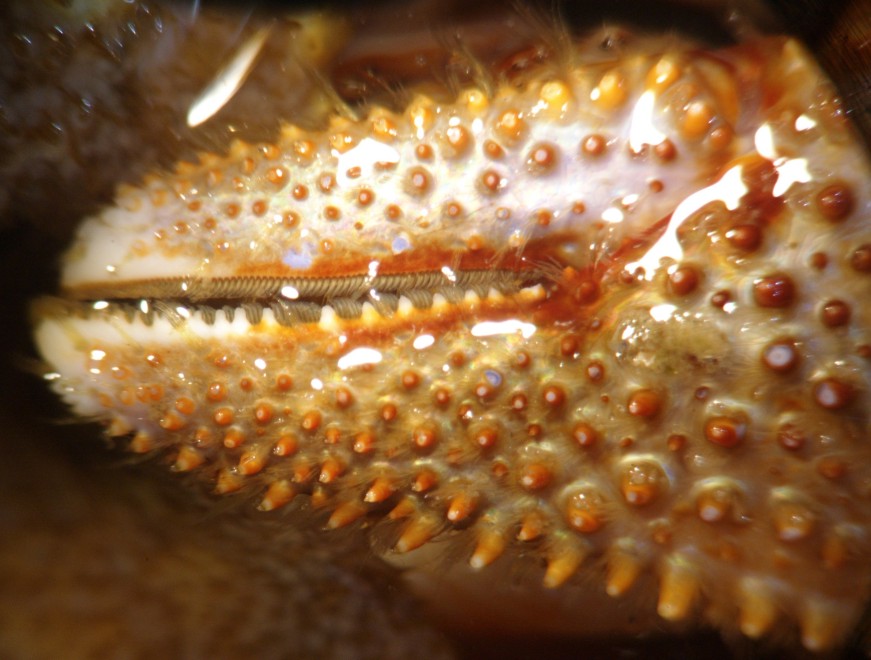 |
| A closeup of the spines on the dorsal side of the chela (propodus) | A closeup of the teeth on the left chela. Note the fine setae lining the edges. |
The end of the propodus
and base of the dactyl
of a walking leg (leg #2). Notice how the dorsal
edge has many
teeth but the ventral edge has few.
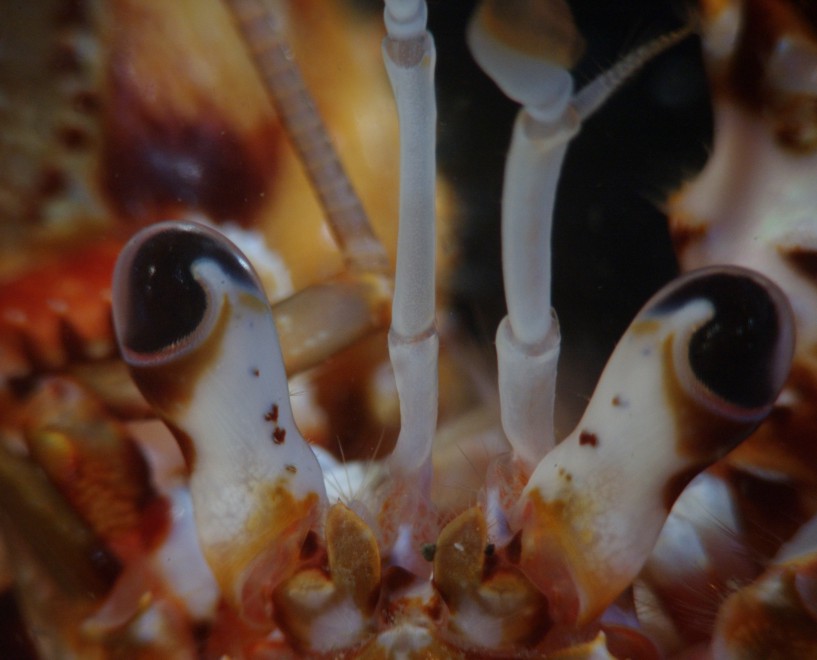
This closeup dorsal view of the head clearly shows the black eyes.
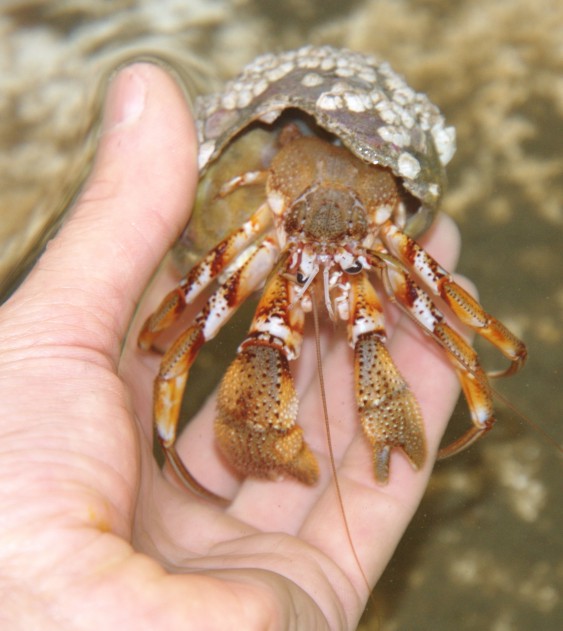
One last view
Authors and Editors of Page:
Dave Cowles (2010): Created original page
CSS coding for page developed by Jonathan Cowles (2007)
Rosario Invertebrates web site provided courtesy of Walla Walla University


